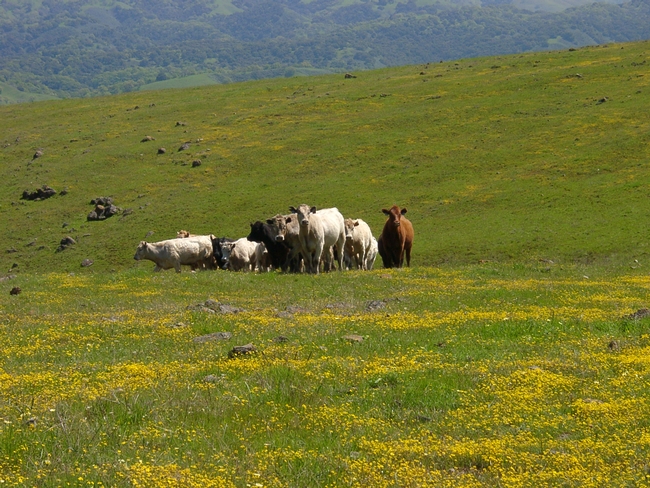Grazing is good for public lands
The author, Sheila Barry, the natural resources and livestock advisor for UC ANR Cooperative Extension in the Bay Area, wrote that overgrazing and impacts to riparian woodlands are legitimate concerns, but have been effectively addressed with modern range management practices. Ranchers can minimize harmful impacts by maintaining proper stocking rates, creating riparian pastures, limiting grazing in sensitive areas and adding off-stream water sources.
Barry delineated a series of beneficial impacts of cattle grazing on Bay Area parklands. She said grazing minimizes wildfire hazards, manages non-native annuals, prevents thatch build up, promotes flowering plants, and improves carbon sequestration.
Barry added that no documented plant or animal species extinction has been linked to cattle grazing in California. On the contrary, numerous threatened and endangered species rely on grazing and rancher stewardship, including Santa Cruz tar plant, Contra Costa goldfields, Sonoma spineflower, San Joaquin kit fox, California tiger salamander, California red-legged frog, Ohlone tiger beetle, and Bay checkerspot and Callippee silverspot butterflies.
The magazine also included a "con" argument, written by Karen Klitz, a member of the Western Watersheds Project board of directors, and Jeff Miller, a conservation advocate with the Center for Biological Diversity and director of the Alameda Creek Alliance. The authors say grazing is incompatible with conservation because damage wrought by livestock is not a thing of the past. Klitz and Miller cite research showing that removing cattle can restore trout populations, native songbirds, wildflowers and amphibians. Grazing cessation at Mount Diablo State Park decreased weedy species and increased native grassland species and supports 16 rare or endangered wildlife species, the article said.

